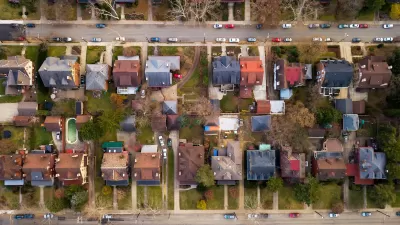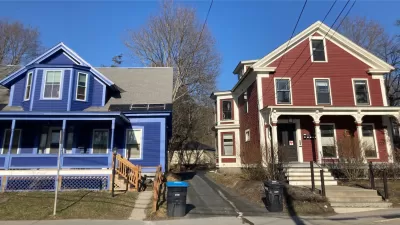A city of about 40,000 residents across the Puget Sound from Seattle has relaxed zoning regulations to entice more homeowners to build accessory dwelling units.

The city of Bremerton in the state of Washington recently eased regulations for the development of Accessory Dwelling Units to increase housing production and affordability, reports Doug Trumm.
"Existing rules allowed backyard cottages or attached ADUs to be up to 60% of the size of the primary residence," writes Trumm. "New rules allow ADUs up to 1,000 square feet in size or 60% of primary residence, whichever is larger. That means smaller lots can still support a reasonably sized ADU. Production was anemic under previous rules."
Christon Volser provided coverage of the city's new ADU laws at the time of the City Council approval in December 2020.
"Wednesday’s ordinance removed parts of city code that required residents to provide a parking space when building an ADU and simplified many of the design standards meant to ensure ADUs matched the surrounding neighborhood," writes Volsar. "The new rules also increase the maximum size of an ADU and waived a requirement that forced owners to live on-site year-round."
Trumm includes a soundbite from Bremerton Mayor Greg Wheeler, a "big backer" of the legislation, making the case for ADUs as a tool for housing affordability.
"We are faced with a shortage of residences in our City, and we can’t wait years for new homes and apartments to come online to address the growing demand. Even during the pandemic, we must respond to address this crisis. ADUs are one part of the solution that we can use to scale up now and make housing more available across Bremerton," said Wheeler in a statement.
As noted by Volser, the new law stopped short of implementing the staff recommendation to allow a second ADU per residential lot.
FULL STORY: Bremerton Eases Backyard Cottage Restrictions

Planetizen Federal Action Tracker
A weekly monitor of how Trump’s orders and actions are impacting planners and planning in America.

Maui's Vacation Rental Debate Turns Ugly
Verbal attacks, misinformation campaigns and fistfights plague a high-stakes debate to convert thousands of vacation rentals into long-term housing.

Restaurant Patios Were a Pandemic Win — Why Were They so Hard to Keep?
Social distancing requirements and changes in travel patterns prompted cities to pilot new uses for street and sidewalk space. Then it got complicated.

In California Battle of Housing vs. Environment, Housing Just Won
A new state law significantly limits the power of CEQA, an environmental review law that served as a powerful tool for blocking new development.

Boulder Eliminates Parking Minimums Citywide
Officials estimate the cost of building a single underground parking space at up to $100,000.

Orange County, Florida Adopts Largest US “Sprawl Repair” Code
The ‘Orange Code’ seeks to rectify decades of sprawl-inducing, car-oriented development.
Urban Design for Planners 1: Software Tools
This six-course series explores essential urban design concepts using open source software and equips planners with the tools they need to participate fully in the urban design process.
Planning for Universal Design
Learn the tools for implementing Universal Design in planning regulations.
Heyer Gruel & Associates PA
JM Goldson LLC
Custer County Colorado
City of Camden Redevelopment Agency
City of Astoria
Transportation Research & Education Center (TREC) at Portland State University
Jefferson Parish Government
Camden Redevelopment Agency
City of Claremont





























